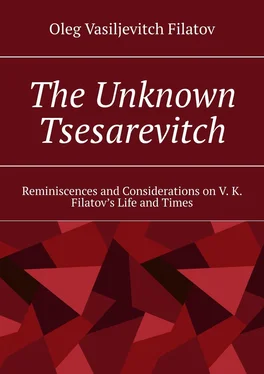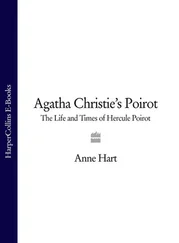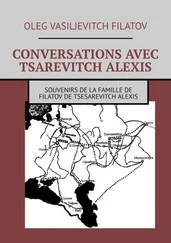Oleg Filatov - The Unknown Tsesarevitch. Reminiscences and Considerations on V. K. Filatov’s Life and Times
Здесь есть возможность читать онлайн «Oleg Filatov - The Unknown Tsesarevitch. Reminiscences and Considerations on V. K. Filatov’s Life and Times» — ознакомительный отрывок электронной книги совершенно бесплатно, а после прочтения отрывка купить полную версию. В некоторых случаях можно слушать аудио, скачать через торрент в формате fb2 и присутствует краткое содержание. ISBN: , Жанр: Историческая проза, на английском языке. Описание произведения, (предисловие) а так же отзывы посетителей доступны на портале библиотеки ЛибКат.
- Название:The Unknown Tsesarevitch. Reminiscences and Considerations on V. K. Filatov’s Life and Times
- Автор:
- Жанр:
- Год:неизвестен
- ISBN:9785449617170
- Рейтинг книги:3 / 5. Голосов: 1
-
Избранное:Добавить в избранное
- Отзывы:
-
Ваша оценка:
- 60
- 1
- 2
- 3
- 4
- 5
The Unknown Tsesarevitch. Reminiscences and Considerations on V. K. Filatov’s Life and Times: краткое содержание, описание и аннотация
Предлагаем к чтению аннотацию, описание, краткое содержание или предисловие (зависит от того, что написал сам автор книги «The Unknown Tsesarevitch. Reminiscences and Considerations on V. K. Filatov’s Life and Times»). Если вы не нашли необходимую информацию о книге — напишите в комментариях, мы постараемся отыскать её.
The Unknown Tsesarevitch. Reminiscences and Considerations on V. K. Filatov’s Life and Times — читать онлайн ознакомительный отрывок
Ниже представлен текст книги, разбитый по страницам. Система сохранения места последней прочитанной страницы, позволяет с удобством читать онлайн бесплатно книгу «The Unknown Tsesarevitch. Reminiscences and Considerations on V. K. Filatov’s Life and Times», без необходимости каждый раз заново искать на чём Вы остановились. Поставьте закладку, и сможете в любой момент перейти на страницу, на которой закончили чтение.
Интервал:
Закладка:
So, after the town was annexed it turned out that there was a secret military organization of the officers among the students of the Acedemy. The following captains were in this organization: D.A. Malinovsky, Semchevsky, Akhverdov, Delinzghauzen, Gershelman, Durasov, Baumgarden, Dezbinin. Via Dmitriy Apollonovich Malinovsky the organization had made contact with the monarchists in Petrograd. It was systematically in great need of money. Captain Akhverdov’s mother, Maria Dmitrievna, took part in this organization. The officers contacted Doctor Derevenko. They tried to get the plan of the Ipatiev house. Lieutenant-colonel Georgiy Vladimirovich Yartsov, chief of the Ekaterinburg instructor’s school of the Academy, testified the following on June 17, 1919: “There were five officers among us to whom I frankly spoke about taking some measures to rescue the Royal Family. These were: Captain Akhverdov, Captain Delinzgausen, Captain Gershel’man. We tried via Delinzgauzen to get the plan of the Ipatiev apartment where the Royal Family was kept.” (He succeeded in getting the plan via Doctor Derevenko who described to him orally the lay-out of the rooms). “Later I myself happened to be in the Ipatiev house and saw that Derevenko had given correct information.” (The officer, accidentally or carelessly, had practically given Doctor Derevenko away. Thus, if this document reached the Reds, then it is no wondered that in 1924 Doctor Derevenko was summoned to ChK in Perm and in 1930 he was arrested and spent his last years in the concentration camp.) 1 For the same purpose we tried to establish contacts with the monastery which supplied the Royal Family with milk. Nothing substantial came out of it: it could not be done, first, because of the house guard and, second, because we were followed. I remember that on July 16, I was in the monastery. On that day the milk was delivered to the house. The head of the photo-section of the monastery the nun Augustina said to me that the soldier said to the nun who brought the milk: “Today we shall take the milk, but to-morrow do not bring it, there will be no need” (Auth.: “That is, he notified her”). I do not remember the things we found in the shaft, apart from those I mentioned. All these things were taken by Captain Malinovsky to be stored”. Captain Malinovsky also mentioned it in his records. He described an exact lay-out of the rooms where the Royal Family members lived, namely, who and where. Then he says that he was one of the first who got into this house after the annexation of the town. He said that there was also a student kept in this house who twice took photos of the house. “…Akhverdov’s man-servant was also a source of information (I know neither his name nor his surname. It seems to me that it was Kotov). He got acquainted with a guard and learned something from him. … I informed our organization in Petrograd sending agreed telegrams in the name of Captain Fekhner (an officer of my brigade) and Riabov, esaul (sergeant) of the combined Cossack regiment. But I never received any answer.” This phrase of Captain Malinovsky shows that the officers’ organization had branches about which Malinovskysaid little. It means that, probably, the organization had been formed before the departure of the Academy from Saint-Petersburg, and the officers told even the White inquiry neither about the number of participants in the organization in Peterburg nor how long it existed, what it did in general and whether they had contact with it later on. It was because the officers were afraid for the life of their people and for the activity of these branches, which could still be effective for a long time in the future, supplying with useful military information and serving as channels to take people to safe places in case of failures. Besides, among the White investigators could be those who worked in the interests of the Red or somebody else. It was the war. The point was that the Tsar’s family should be rescued, and members of the organization did not know all the information because they knew that they should think about security in this dangerous work. All of them risked their lives and the lives of their relatives. “I would say that we had two plans, two goals. We had to have a group of people who at any moment in case of the expulsion of the bolsheviks could occupy the Ipatiev house and guard the safety of the Tsar’s Family. The other plan consisted in a daring attack of the Ipatiev house and taking the Royal Family away. Discussing these plans we drew seven officers more from our Academy. These were: Captain Durasov, Captain Semchevsky, Captain Miagkov, Captain Baumgarden, Captain Dubinkin, and Rotmistr Bartenev. I forgot the name of the seventh. This plan was utterly secret and I think that the bolsheviks could not learn about it. For instance, Akhverdova knew nothing about it… Two days before the occupation of Ekaterinburg by the Czechs I, among 37 officers, left for the Czechs and on the next day after the occupation I returned to the town.” “Note that Nikolai Ross (1987) who published the cited part of Malinovsky’s evidence cut off the end of the protocol recorded in 1919 by N.A. Sokolov. Captain Malinovsky believed that the Germans took the Family to Germany, simulating an execution.“ 1 However, there are documents in the State archive of the Russian Federation which testify to the fact that not everybody agreed that all the members of the family had been killed. So, as Fyodor Nikiforovich Gorshkov from Ekaterinburg said, officer Tomashevsky asserted that the execution took place in the dining room and that not everybody was killed. Doctor Derevenko, as investigator Sergeev said, also believed that somebody remained alive. Incidentally, Sergeev himself was of the same opinion. N.A. Sokolov’s report on the inquiry into the murder of the Tsar’s family in the Urals is known to have been sent to widow Empress Maria Fyodorovna who till her death in 1928 beleived that her son Nikolas II and grandson Tsesarevich Alexei remained alive. She had written about it to Marshal Mannerheim in Finland. In this report N.A. Sokolov writes: “… Jewels sewn to clothes as buttons had, apparently, burned. The only diamond was found on the outskirts of the fire trampled into the earth. It (its setting) was slightly injured by fire.”… These words do not hold water. Carbonaceous compounds such as diamonds cannot be damaged by fire. These conclusions are incorrect. If Sokolov did not find what he was searching for, it means that the people had been annihilated. But maybe they had been rescued? Who had rescued them? Sokolov is known to have left this version out of his account. Why? What prevented investigator Sokolov N.A. from inquiring into the version of the rescue of part of the family of Emperor Nikolas II? 1 Today we know information about the people who had rescued Tsesarevich Alexei Nikolaevich Romanov and who had named him Vasily and had done everything for him to live and work. It was the middle-class family of Filatov K.A. in Shadrinsk. What and who was he? The Filatov family – Ksenofont Afanasyevich Filatov and Ekaterina, his wife – could have refused to take a wounded boy into his family if they had not been prepared for this morally. They had a son born in 1907. In 1937 Vasily Filatov mentioned in his biography that his mother and brother died early 2and by 1921 he was alone. Though he had two uncles who served in the Red Army and disappeared
Our examination of the archives revealed that Vasily Filatov had also step brother and sister, born of the second wife of Ksenofont Filatov, Ekaterina Dmitrievna Utusikova. These were Konstantin born in 1915 and Nadezhda born in 1917. 3 The two uncles are Ksenofont’s siblings – Alexander born in in 1887 and Andrei born in 1891, and their sister Anna born in 1895. 4 Then records in the documents related to the complement of the family of Ksenofont Afanasyevich Filatov are made with pencil by a clerk of the municipal administration (according to the archive data). The form itself is printed using the pre-reform letters i and ъ filled in without them. It should be emphasized that it was 1915 and the documents were then recorded in a strict correspondence with instructions, using special ink, a numbered pen, and in special handwriting. Further, apart from the wife of the first-grade soldier Ksenofont Filatov Ekaterina, son Vasily eight years, son Alexander six years, wife Ekaterina eighteen years old, father Afanasy Nikanorovich, mother Maria Andreevna, brothers and sisters are included in this document. Andrei served in the army, and was discharged for 6 months to recover, Alexander was in prison, and their sister Maria was 15 years old, who was born in 1899. An examination of the documented family-tree of the Filatovs from 1863 and further has shown that Ksenofont Filatov had the following children by his first wife Elena Pavlovna Gladkikh (1889—1912): sons Vasily born in 1907, Alexander born in 1909, died on December 3, 1915, Konstantin born in 1911, died in 1911, daughter Antonina born in 1912, died in 1912. Documents of the Shadrinsk municipal uprava and of “Commission for the Care of the Poor” for 1915 contain an application for allowance to his children filed by Filatov Ksenofont Afanasyevich on January 8, 1915. That is, his son Vasily born in 1907 and son Alexander (1909—1915). Protocol #11 of January 27, 1915 mentions son Vasily (1907) and Alexander (1909). Vasily is also mentioned in Ksenofont Filatov’s other applications (protocols #12 of February 25, 1915 and #13 of March 18, 1915). 1 after these records in pencil, in 1915—1916 the records are made with pen. But in the documents of later years the name Maria disappeared. What does it mean? It means that superfluous dependents had appeared but not in July 1918 – in 1915, which could have aroused suspicion when inspecting and when searching for the two children of Nikolas II. Therefore the record had been dated 1915. Similarly, to save a man, one could have added a superfluous child to the register of births, deaths and marriages after the event, since the point was to save the lives of Tsesarevich Alexei and his sister Grand Duchess Maria. If later anybody wanted to check the relatives of Ksenofont Filatov, then these records could have been found. But one could always say that yes, really, Vasily and Maria did exist but it was Civil war at that time, disruption, and they disappeared somewhere, and witnesses died. Father did tell us that during the Civil war he “had travelled” very much. Even when teaching in Tiumen oblast he told us that he led a free life and once he decided with his friends to cross the border near Sukhumi into Turkey but was wounded by border-guards, fell from the cliff and broke his leg. It is not clear, however, how he, the son of a former military man and then a shoe-maker, being young, could succeed in escaping from the border-guards. And later on, it is also not clear why he wanted to run away from his living parents and why they let him do it, etc. A conclusion can be drawn from father’s documents that he left home in 1921. The records of the Shadrinsk municipal archive say that on February 8, 1921 he entered the Polytechnic school but then and there, on February 8 he went on leave and was not on the list of students any more. How’s that? He is admitted, put down for allowances, provided with everything necessary: fur-coat, felt boots, clothes – an important support to his parents! But he left. Besides, in this Polytech there were teachers, Candidates of Science, from Ekaterinburg, and, naturally, there was a danger that they would identify him, Vasily, as Tsesarevich Alexei Nikolaevich Romanov. Hence, he could not stay there for long. 1 Then a new contradiction in his biography: as if there was a famine in Shadrinsk in 1921 and he had to leave for the Volga. But at that time a famine could be anywhere but not in Shadrinsk. In 1995, after our trip to Ekaterinburg and Shadrinsk, we learned that between 1960 and 1962 the prosecutor’s department searched for two Filatovs, Vasily and Maria. For this purpose they collected the eldest citizens of Shadrinsk with their written undertaking not to spread anything. We heard about it from a relative of Ksenofont Filatov in the line of his uncle Vasily Nikanorovich. Vasily Nikanorovich had a son Leonid Vasilyevich who married in 1918 Sedunova Zoya Pavlovna. 2 They had a daughter born in 1919, and it was she who told us that her mother Zoya Pavlovna Filatova (Sedunova) had been among those summoned to the prosecutor’s department. She herself was not there due to her young age (she was then 43). In 1918 her mother was 18 and her father was 22. A conclusion can be drawn that there was something behind the fact that among the aged, the Filatovs including, they were questioned about the 1918 events. And with this fact there was connected the fate of our father, Vasily Ksenofontovich Filatov. Why was it necessary for the prosecutor’s department after so many years to search for Ksenofont Filatov’s children? What did they mean to this department? Then, the photo of Mikhail Pavlovich Gladkikh dated March 1922; order #53, negative #6, signed by Father himself, as he said, is direct evidence that he exactly is Tsesarevich Alexei. The photo was signed in 1922, it means that these events concerned Ekaterinburg and Shadrinsk. The Filatovs and Gladkikhs had been saving the tsar’s son. If this photo were signed in 1915 or 1916, it would be quite natural, the Romanovs were then alive. Tsesarevich Alexei could have signed the photo of any acquaintance and it could unnecessarily be Gladkikh or somebody of the Filatovs. But after the events of 1918 this man, who had saved his life, became dear to him. He signed this photo in memory, carried with him through his long hard life and handed it over to us. The Filatovs had served in the army before the Revolution, and so far, it is not clear in what town, in what units, whether they could have seen Tsesarevich Alexei and, maybe, could have been in the guard of the Ipatiev house. In the summer of 1918 both Filatov brothers served in the First Peasant regiment in Ekaterinburg. Alexander served in the first company and Andrei in the wagon train. Alexander was killed during that summer of 1918. Andrei remained alive but was sickly. He lived with the family of his father Afanasy Nikanorovich who was 56, with the same family Ksenofont Afanasyevich lived, ill with tuberculosis. But in 1920 he was still summoned to the call-up commission. He died on September 22, 1922. The children of Afanasy Nikanorovich totaled five. Afanasy Nikanorovich now receives a pension for his lost son Alexander. He lives in Shadrinsk, Soviet Str., 54, district 50, region 3. 1 The second wife of Ksenofont Afanasyevich lived in Shadrinsk after his death and, from the archive record, in 1930 she worked as an unskilled labourer. Elena Ivanovna Gladkikh, the first wife of Ksenofont Filatov (died of consumption in 1912). 2 She had a brother Mikhail Pavlovich Gladkikh, born in 1896. He had two siblings: Fyodor and Grigory. Mikhail was called up in 1915. In 1930 he lived in Shadrinsk and worked in the artel “Obuv” (Footwear). He and his wife Gladkikh Daria Yakovlevna lived in Shadrinsk, Pokrovskaya Str., 169, district 2. 3 Mikhail Pavlovich brought Tsesarevich Alexei from Ekaterinburg to the Filatovs, his relatives, and this is always risky (however, the participation of the Filatov brothers – Ksenofont, Alexander, and Andrei – in the rescue of Tsesarevich Alexei is now evident). He could have brought him to other people, but it was in war time and he could not trust other people. It turns out that the Filatovs, M.P. Gladkikh, the Strekotins (they were seven, as known from their relatives who have been living till now in Ekaterinburg), Shulin, and Kleshcheev must have known each other for some time. Maybe, they served in the army together, that is, those people must have been in close contact and, by the order of the Tsar could have undertaken to save his son. Hence, they had had to have planned everything beforehand, long before the execution, that is, probably, in 1917, and, knowing about Alexei’s illness, Nikolas II would never entrust his son to unknown people. I know that between 1937 and 1970 one of the lecturers at Princeton University, USA, was Chebotarev Grigory Porfiryevich (born in 1899). He was a building engineer. On December 9, 1917 Tatiana Nikolaevna Romanova, a daughter of Nikolas II, wrote a letter from Tobolsk to Chebotarev’s mother. In her letter she asked about Filatov’s health. At that time they had not yet lived in Tsarskoe Selo for 6 months. Chebotarev wrote a book “Russia my Native Land” (published in the USA). I wonder, which Filatov Tatiana wrote about to G.P. Chebotarev’s mother. Valentina Ivanovna Chebotareva (née Dubiatskaya) was married to Major-General Chebotarev Porfiry Grigoryevich. The daughter of Major-General Chebotarev P.G. was married to Edward C. Biil in 1941. She has been a lecturer on Russian language and literature at Princeton University, USA since 1948. I think that it was either Ksenofont Filatov, the step-father of Filatov Vasily Ksenofontovich, who had served in the army, or his sibling Andrei who was dismissed in 1916 for 6 months to recover and then was cured in the third infirmary in Tsarskoe Selo, a bout whom the Grand Ditchess Tatiana had asked, in her letter. (From Grand Duchess Tatiana Nikolaevna to V.I. Chebotareva +). The letter is on four pages, 18x14. Tobolsk. Byvshy Gubernatorsky, 9. December 9, 1917. My dear Valentina Ivanovna, have you received my letter of the 29 th? Kindly, pass this letter to our Prince (E.A.Eristov). Probably, you now miss L.F. (Krasnova)? But it’s good that they (the Krasnovs) are together again. I am sorry for poor Filatov. It’s a pity that he has been ill for so long. He was already bedridden when we were with you. Is it really his wound that hurts him or maybe it is something else? And how are our Baron (D.F. Taube) and Kupych?… …Well, good-bye, darling Valentina Ivanovna. God be with you. If anybody wants to write us – let them do it directly. My kisses and love to you. Also to Aliusha (V.P. Chebotareva) and O.P. (Grekova). Good-bye. Your Tatiana
Читать дальшеИнтервал:
Закладка:
Похожие книги на «The Unknown Tsesarevitch. Reminiscences and Considerations on V. K. Filatov’s Life and Times»
Представляем Вашему вниманию похожие книги на «The Unknown Tsesarevitch. Reminiscences and Considerations on V. K. Filatov’s Life and Times» списком для выбора. Мы отобрали схожую по названию и смыслу литературу в надежде предоставить читателям больше вариантов отыскать новые, интересные, ещё непрочитанные произведения.
Обсуждение, отзывы о книге «The Unknown Tsesarevitch. Reminiscences and Considerations on V. K. Filatov’s Life and Times» и просто собственные мнения читателей. Оставьте ваши комментарии, напишите, что Вы думаете о произведении, его смысле или главных героях. Укажите что конкретно понравилось, а что нет, и почему Вы так считаете.












